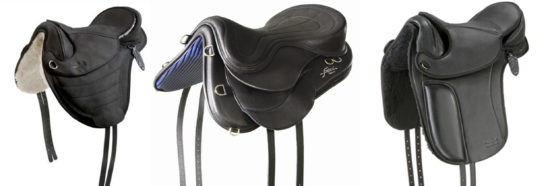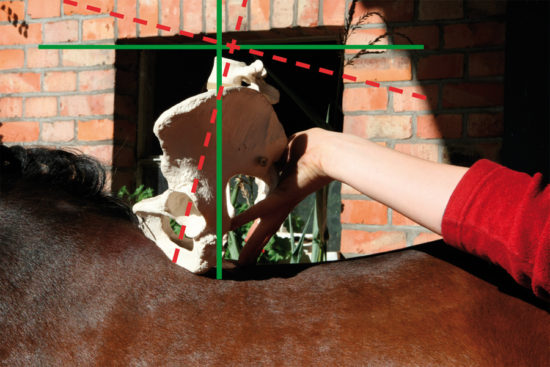Saddle Fit and Treeless Saddles
I just realized that although the whole topic of treeless saddles vs. treed saddles is a pretty controversial one, I have not until now shared my personal thoughts with you on them in this blog space. Please do understand however, that my thoughts are based on scientific facts and truths – regardless what the manufacturers of these treeless saddles claim. I have had some interesting discourse on the topic with @Barbra Ann King of Relationship Riding in Alberta, and some of these thoughts are based on her point of view. In my blog next week I will present more of my own viewpoint on the topic, but this week I have taken a more conciliatory stance.

The subject of treed and treeless saddles is somewhat contentious and each side will always have its ardent supporters. Since they first showed up on the market, some treeless saddle manufacturers have addressed the spinal issues as well as weight distribution, although there are very few that are doing it properly.
Ms. King has had experience in rehabilitating horses with muscle atrophy caused by treed saddles, with dramatic and convincing results. So obviously there are two sides to the story; I still maintain that while they may even be a positive solution for a short period, in general properly fitted treed saddles win hands down, every time. There is a reason for the development of the saddle tree – which goes back many centuries, when horse people were actually horse people and had to ensure their horses stayed sound as their lives depended on it. The saddle tree acts as an interface between the vertical spine of the rider and the horizontal spine of the horse – protecting both against long term back damage.
Many of today’s treeless saddles offer spinal clearance and proper weight distribution, but not all treeless saddles are created the same. Some are still no more than ‘bareback pads’. The same applies to treed saddles, obviously, where many are still made the way they were made decades ago – with relatively unadjustable trees and gullet plates.

Weight distribution on a horse in motion is different when on a hard surface, i.e. tree, versus a soft surface, i.e. treeless. When weight is pushing down on a hard surface in motion, the distribution of this weight has to be balanced and spread out throughout the tree in order to not unbalance the horse or cause pressure points. Otherwise, the tree will be very uncomfortable for the horse since the rider’s body and horse’s body are not in contact with each other, thus not moving at the same time/rhythm. On a soft saddle, the rider’s body moves in synchronicity with the horse’s body as there is nothing interfering between them. Since the horse’s body is in motion and the rider follows that movement, the pressure points are not as significant on a treeless saddle and weight distribution becomes and whole different story. This may explain why centuries of bareback riding did not create sway back, sore horses. However – we need to remember that bareback riders (mostly aboriginals – i.e. North American Indians – are used as the example here) rode ponies, and did not ride dressage or any of the other disciplines we now practice. Sway back is a man-made condition, for the most part, that occurs when a horse’s dorsal muscles are atrophied because they haven’t been used for many years. Treed saddles can prevent the dorsal muscles from moving freely and to their full range of movement – if it is not fitted properly to the biomechanical and anatomical requirements of the horse. A treed saddle may compensate somewhat for a rider’s lack of balance, to a point that the rider will not necessarily feel unbalanced or feel the need to make any adjustments. This can also cause aggravation on a horse’s back. In a treeless saddle, there are no hard components to “hold” the unbalanced rider which means the rider will feel his lack of balance and need to correct it immediately. Again – if this is a rider with enough competency and capability to actually do so!
There are many components that should be taken into consideration when talking about treed versus treeless such as balanced, well-trimmed feet, body condition, conformation (horse and rider!) as well as level of riding. Ultimately, a horse should carry a rider without hindering his natural movement, so much so that you could imagine “erasing” the rider from the horse’s back and observe the horse’s movements. Ideally, the horse should move as naturally with a rider as without one (which in truth is very rarely the reality). We mustn’t forget that horses were never meant to be ridden; this is an artificial constraint that we have imposed on them.
©2016 Saddlefit 4 Life® All Rights Reserved
